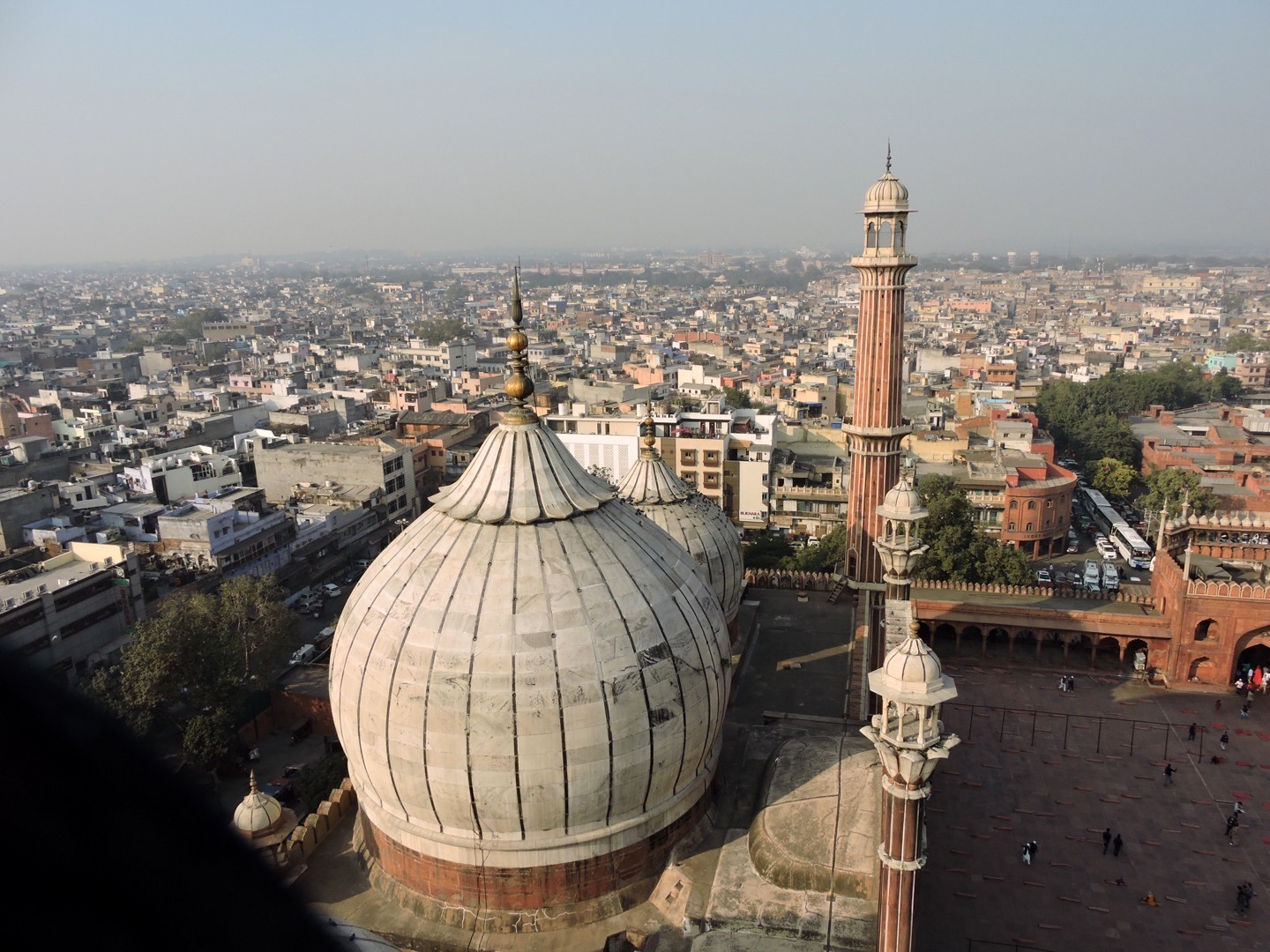Jama Masjid, the grand mosque of Delhi, stands as a testament to the architectural brilliance and religious devotion of the Mughal Empire. Commissioned by Emperor Shah Jahan in 1644, the same visionary behind the Taj Mahal, this majestic structure took 12 years to complete, finally opening its doors to worshippers in 1656. The mosque's original name, "Masjid-i-Jahan-Numa," meaning "mosque commanding view of the world," reflects its imposing presence and Shah Jahan's grand vision for his new capital, Shahjahanabad. The construction was a monumental undertaking, involving over 5,000 workers and costing one million rupees, an astronomical sum for its time. The mosque was inaugurated by an imam from Bukhara, present-day Uzbekistan, symbolizing its significance beyond the borders of the Mughal Empire.
The architectural marvel of Jama Masjid represents a harmonious blend of Persian, Mughal, and Indian styles. Built primarily of red sandstone with white marble accents, the mosque's design showcases the synthesis of Islamic and Hindu architectural elements, a hallmark of Mughal construction. The mosque stands on a lofty platform, accessed by a flight of 30 broad steps, which elevates it above the surrounding area and creates an impressive approach. The main structure features three imposing gateways, four towering minarets, and three magnificent domes adorned with alternating stripes of black and white marble. The central courtyard, capable of accommodating over 25,000 worshippers, is paved with white and black marble in intricate patterns, creating a mesmerizing visual effect. The prayer hall, with its high ceiling supported by 260 pillars, is adorned with intricate calligraphy and floral motifs, showcasing the exquisite craftsmanship of the era.
The construction of Jama Masjid represented more than an architectural endeavor; it was a statement of Mughal power and religious devotion. Shah Jahan envisioned it as the principal mosque of his new capital, a symbol of the empire's grandeur and his own piety. The mosque's location, adjacent to the Red Fort, the seat of Mughal power, further emphasized its importance in the imperial landscape. The use of red sandstone and white marble created a visual link between these monumental structures, unifying the architectural language of Shah Jahan's reign. The mosque's design reflected the Mughal approach to governance, which sought to accommodate diverse religious and cultural practices. Elements such as lotus motifs and chhatris, borrowed from Hindu temple architecture, were seamlessly integrated into the Islamic structure, symbolizing the cultural synthesis that characterized the Mughal era.
Throughout its history, Jama Masjid has served as a center of cultural, social, and intellectual exchange. During the Mughal era, the mosque hosted scholars, poets, and theologians, contributing to the vibrant intellectual life of Delhi. It became a gathering place for the city's Muslim community, not only for daily prayers but also for important discussions and decisions affecting their lives. The mosque's vast courtyard served as a public space where people from all walks of life could meet, fostering a sense of community and shared identity. Even today, the area surrounding Jama Masjid is a bustling hub of activity, with markets selling everything from traditional crafts to street food, reflecting the enduring cultural significance of the mosque in the life of Old Delhi.
The religious and cultural importance of Jama Masjid continues to resonate in modern times. As one of the largest mosques in India, it plays a crucial role in the spiritual life of Delhi's Muslim community. The call to prayer, echoing from its minarets five times a day, draws the faithful to congregational prayers. During important Islamic festivals such as Eid al-Fitr and Eid al-Adha, the mosque becomes the focal point of celebrations, with thousands gathering to offer prayers and partake in the joyous atmosphere. The mosque also houses a madrasa, continuing its tradition as a center of religious education. Beyond its religious function, Jama Masjid has become an important symbol of India's composite culture, attracting visitors from all faiths who come to admire its architectural beauty and historical significance.
Over the centuries, Jama Masjid has witnessed significant historical events and transformations. During the Indian Rebellion of 1857, the mosque briefly served as a refuge for rebel soldiers, leading to its closure for several years by British authorities. In the post-independence era, the mosque has undergone several restoration efforts to preserve its architectural integrity and historical value. The Archaeological Survey of India, in collaboration with the Delhi Waqf Board, has undertaken conservation projects to address issues such as water seepage and structural damage, ensuring that this architectural gem continues to stand tall for future generations. These restoration efforts have focused not only on preserving the physical structure but also on safeguarding the intricate artwork, including the delicate calligraphy and stone carvings that adorn the mosque.
Today, Jama Masjid stands as both a living place of worship and a popular tourist attraction, bridging Delhi's rich past with its vibrant present. The mosque offers a unique vantage point to view Old Delhi, with its minarets providing panoramic views of the city's skyline. The surrounding area, known for its narrow lanes, traditional markets, and mouthwatering street food, adds to the cultural experience of visiting this historical monument. As it stands majestically against the backdrop of a modernizing city, Jama Masjid remains a powerful symbol of India's rich cultural heritage, religious diversity, and architectural legacy, inviting all who visit to step back in time and marvel at the enduring vision of its creators.








